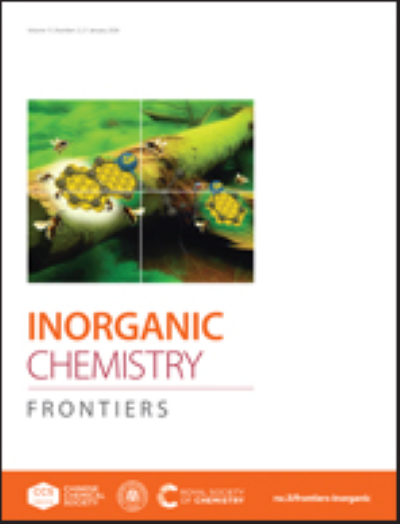Co-nucleated Co doped SnO2/SnS2 heterostructures to facilitate diffusion towards high-performance Li and Na ion storage
IF 6.1
1区 化学
Q1 CHEMISTRY, INORGANIC & NUCLEAR
引用次数: 0
Abstract
Sn-based compounds are emerging as a promising category of alkali metal ion storage materials due to their relatively high theoretical specific capacity and natural abundance. However, inadequate ion diffusion, poor electron transfer, and significant volume fluctuations during prolonged charge and discharge cycles lead to severe structural deterioration and capacity loss, hindering their further practical application. Heterostructure engineering can not only alleviate the internal stresses and dramatic volume alterations induced by ion deintercalation, but also enhance the dynamics of ion transport. Adopting a dual-optimization strategy that incorporates heterogeneous structure construction and doping, we successfully synthesized ultra-thin Co doped SnS2/SnO2 heterostructure nanosheets on carbon cloth substrates via a co-nucleation growth process. After rigorous investigation into its lithium-ion storage performance and mechanisms, it exhibited excellent lithium storage capabilities (1518 mA h g−1 at 330 mA g−1, with 81% of the initial capacity retained after 100 cycles). Pleasingly, when incorporated into next-generation sodium-ion batteries, Co-doped SnS2/SnO2 anodes exhibit highly competitive sodium storage capabilities (1250 mA h g−1 at 220 mA g−1, with 97.8% of the initial capacity retained after 200 cycles). The incorporation of Co ions and the formation of heterostructures have been confirmed to enhance ion diffusion and reaction kinetics. This study presents a novel approach for the facile preparation of multifunctional Li and Na ion storage materials featuring element-doped heterogeneous compositions.

掺杂 Co 的共核 SnO2/SnS2 异质结构促进扩散,实现高性能锂离子和钠离子存储
锡基化合物因其相对较高的理论比容量和天然丰度,正在成为一类前景广阔的碱金属离子存储材料。然而,在长时间的充放电循环过程中,离子扩散不足、电子传递不畅以及显著的体积波动会导致严重的结构退化和容量损失,从而阻碍其进一步的实际应用。异质结构工程不仅能缓解离子脱插引起的内应力和剧烈体积变化,还能增强离子传输的动态性。我们采用异质结构构建和掺杂的双重优化策略,通过共核生长工艺在碳布基底上成功合成了超薄的钴掺杂 SnS2/SnO2 异质结构纳米片。经过对其锂离子存储性能和机理的严格研究,它表现出了卓越的锂存储能力(在 330 mA g-1 的条件下可存储 1518 mA h g-1,循环 100 次后可保留 81% 的初始容量)。令人欣喜的是,当将掺钴的 SnS2/SnO2 阳极应用到下一代钠离子电池中时,它表现出了极具竞争力的钠存储能力(在 220 mA g-1 的条件下可达到 1250 mA h g-1,循环 200 次后可保留初始容量的 97.8%)。Co 离子的加入和异质结构的形成已被证实能增强离子扩散和反应动力学。本研究提出了一种新方法,可用于轻松制备具有元素掺杂异质成分的多功能锂离子和钠离子存储材料。
本文章由计算机程序翻译,如有差异,请以英文原文为准。
求助全文
约1分钟内获得全文
求助全文
来源期刊

Inorganic Chemistry Frontiers
CHEMISTRY, INORGANIC & NUCLEAR-
CiteScore
10.40
自引率
7.10%
发文量
587
审稿时长
1.2 months
期刊介绍:
The international, high quality journal for interdisciplinary research between inorganic chemistry and related subjects
 求助内容:
求助内容: 应助结果提醒方式:
应助结果提醒方式:


